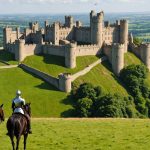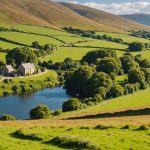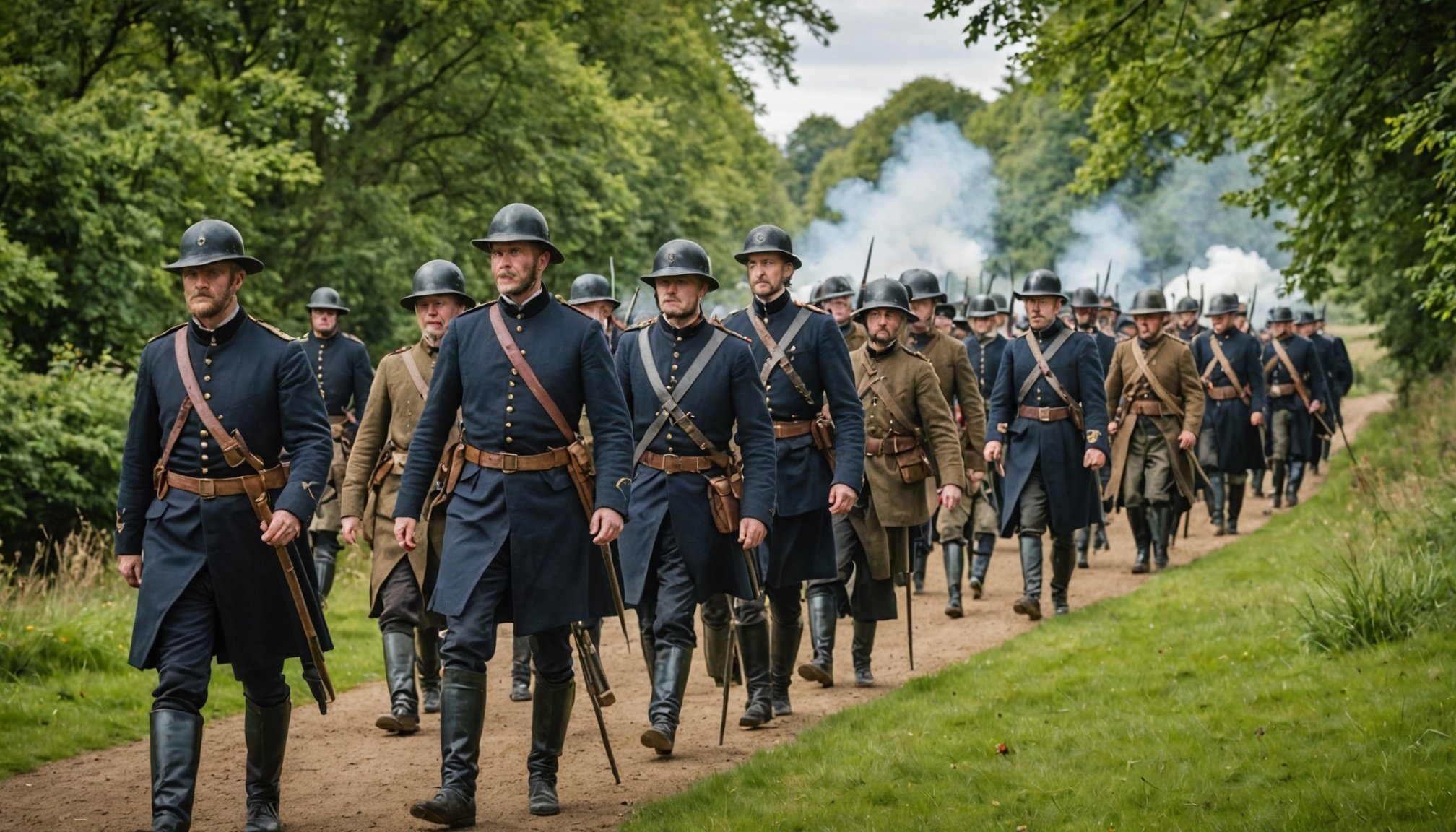Overview of the British Civil War
The British Civil War profoundly influenced the course of history in England. Understanding the timeline and events is crucial to grasp its significance. The conflict, spanning from 1642 to 1651, featured three major civil wars. The initial phase began in 1642, characterized by the decisive Battle of Edgehill, where neither side claimed clear victory. This clash marked the beginning of a turbulent period in England’s history, laying the groundwork for future battles.
Timeline & Key Events
The British Civil War unfolded over almost a decade, with pivotal moments such as the Battle of Marston Moor in 1644 that saw a significant victory for the Parliamentarians. This victory shifted power dynamics significantly. By 1645, the Battle of Naseby saw Parliament gaining a decisive edge, leading to King Charles I’s surrender in 1646. However, tensions persisted, resulting in the second and third conflicts, eventually concluding with the execution of Charles I in 1649 and the rise of Oliver Cromwell’s Commonwealth.
This might interest you : Explore the Top UK Cities for Engaging Guided Tours of British Brewing Heritage
Importance & Figures
The British Civil War played a vital role in shaping modern Britain, influencing governance and societal structures. Key figures such as Oliver Cromwell and King Charles I drove these changes, with Cromwell’s influence extending into the political landscape, fundamentally transforming the nation’s governance approach.
Essential Historical Stops
Exploring key historical sites from the British Civil War offers a tangible connection to the past. These locations played pivotal roles and now serve as poignant reminders of this tumultuous period.
Also read : Exploring British Wallpaper Design: A Comprehensive Guide to Hands-On Workshops for Adventurous Travelers
The Battle of Edgehill
The Battle of Edgehill, fought in 1642, marked the first clash of the Civil War. Both Royalist and Parliamentarian forces suffered significant casualties, but neither side claimed victory. Visitors today can explore the battlefield and gain insight through interpretive panels scattered across the site. Noteworthy figures such as King Charles I influenced these early confrontations.
Marston Moor
The Battle of Marston Moor in 1644 was a turning point that greatly favoured the Parliamentarians. The site presents captivating tales and is ideal for historians interested in battle strategies and the changing power dynamics of the era. Walking trails guide visitors through crucial areas, bringing stories to life.
Naseby
Naseby witnessed a defining moment in 1645 when Parliamentarian forces gained a decisive advantage, tipping the conflict’s balance. Modern markers and educational trails highlight the preciseness and intensity of the battle. Tourists often embark on guided walks, enhancing their understanding of this strategic victory.
Suggested Itineraries
Exploring British Civil War sites through well-crafted travel itineraries can transform a historical excursion into a captivating adventure. For a sample three-day journey, consider beginning in Oxford. Known for its university, Oxford was pivotal as King Charles I’s stronghold. On the first day, wander the city, visiting landmarks like Christ Church College, used as a base during the war. A suggested walking tour offers insight into these historic moments.
On the second day, travel to the Battle of Naseby site, which was integral in shaping the war’s outcome. Engage with detailed markers and trails that vividly depict the battle’s intensity. Opt for a guided tour to gain expert insights into the strategic significance of this location.
Day three could take you to the Tower of London, the witness to tangible links between the Civil War and monarchy. Here, explore exhibitions highlighting its use during the war and hear stories of notable prisoners. Align your visit with scheduled tours for in-depth learning.
Deciding between guided tours and self-guided adventures hinges on personal preference. Guided tours present a curated experience, while self-guided options offer flexibility. To maximize learning, research each site thoroughly, offering a richer historical context during visits.
Practical Travel Tips
Travelling to explore the historical sites of the British Civil War requires careful planning to enhance your visit. Here are some essential travel tips for an enriching experience:
Visiting historical sites during the spring and autumn months allows you to avoid the tourist crowds while enjoying milder weather. It’s advisable to check the opening times of each site, as they can vary, especially in off-peak seasons.
For transportation, consider using Britain’s extensive rail network to travel between key locations like Oxford and London. The train offers comfort and speed, ideal for those eager to explore multiple sites in a limited timeframe. Buses and hire cars provide flexibility for reaching remote battlefields like Naseby, but plan routes in advance to optimise travel times.
Packing wisely is crucial; bring sturdy footwear for navigating outdoor trails and comfortable clothing suited to the often unpredictable British weather. It’s also beneficial to carry a portable power bank for electronic devices, ensuring your camera or phone is always ready to capture the significant landmarks you will encounter.
By preparing thoroughly, you’ll ensure a smooth journey, reflecting on the profound history each location has to offer.
Overview of the British Civil War
The British Civil War stands as a key transformational period in British history, spanning from 1642 to 1651. Understanding its significance requires examining crucial events and figures. The Civil War began with the indecisive Battle of Edgehill in 1642, marking the start of intense conflict without delivering a conclusive victory to either the Royalists or the Parliamentarians.
Pivotal moments like the Battle of Marston Moor in 1644 shifted power dynamics, as the Parliamentarians scored a crucial victory. The Battle of Naseby in 1645 marked another turning point, leading to King Charles I’s eventual surrender in 1646. This phase of the war highlights the switch in dominance, setting the stage for later developments.
The war’s impact extended beyond military tactics. It fundamentally altered Britain’s governance. The execution of King Charles I in 1649 and the subsequent rise of the Commonwealth under Oliver Cromwell illustrate shifts in political authority. Cromwell’s role in restructuring governance left lasting influences on British society, driving a transformation in monarchy and constitutional practices. These events collectively underscore the Civil War’s pivotal role in shaping modern Britain, emphasizing changes in governance and societal structures.
Engaging Stories and Anecdotes
The British Civil War is rich with remarkable personal stories and historical anecdotes that illuminate the human experience during this tumultuous period. These narratives help to capture the essence of the era and connect us with the individuals who lived through it.
One such tale involves a former Parliamentarian soldier who recounted a legend of near-mythical courage. During the Battle of Edgehill, it is said a layman rallied his village, leading a spirited defence of their homes against the Royalists. Despite overwhelming odds, their resolve held strong. This story resonates with themes of common resilience and community spirit, even amidst great adversity.
Another captivating anecdote surrounds an unexpected prisoner housed in the Tower of London. A young noblewoman, captured and accused of espionage, used her wit to charm guards and eventually gain her release. Her tale is often regarded as an example of how individuals navigated complex loyalties during the war, prioritising survival.
Folklore also colours the legacy of sites like Marston Moor, where myths about ghostly sightings fuel visitors’ imaginations. By delving into these vivid accounts, we gain a deeper appreciation for the rich tapestry of life that defined the British Civil War.











